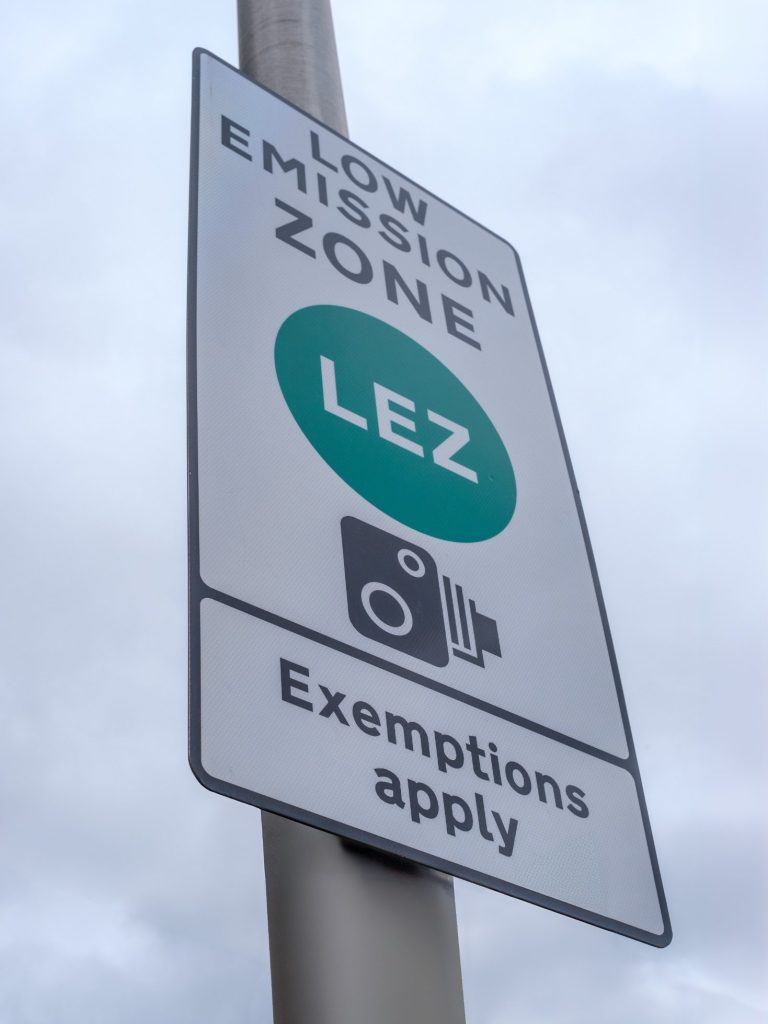04
APRIL
2025

From Smog to Smiles: The Great Construction Fuel Revolution
The UK construction industry is swapping its diesel-stained overalls for a green hydrogen cape. With 2.5 million tonnes of oil equivalent guzzled annually by construction machinery 6, the sector contributes heavily to air pollution and climate change. But three ground breaking initiatives – the Zero Diesel Sites Route Map, NRMM decarbonisation findings, and the Lower Thames Crossing’s 70% carbon cut – are turning diggers into climate champions. Let’s explore how backhoes are going from fossil-fuelled foes to hydrogen-powered heroes.
↓
Gavin Duffy - Zeromachine Ltd.
ID 327486139 © Mrdoomits | Dreamstime.com
1. The Zero Diesel Sites Route Map: A 2035 Deadline for Diesel’s Retirement Party
Launched in June 2023, this industry-led plan aims to eliminate 78% of diesel from UK construction sites by 2035 2 6. Think of it as a "12-step program" for diesel addiction. This programme is structured into three phases :
- Phase 1 (2023-2025): Implement efficiency measures and phase out generators where possible.
- Phase 2 (2026-2030): Scale up the use of electric and hydrogen-powered machinery like GeoPura’s silent fuel cells 7
- Phase 3 (2031-2035): Complete the transition for all but specialist equipment.
Why the rush? Diesel-powered Non-Road Mobile Machinery (NRMM) emits 11.4 MtCO₂e annually – equivalent to 6 million cars 3. As HS2’s Neil Wait notes:
"The carbon challenge we face is significant and can only be overcome if we show real determination in a push for change. HS2 Ltd has played a key role in the development of the Route Map and is already making great progress with nineteen diesel-free construction sites on the project. Today’s launch* is a tangible demonstration of the industry’s shared commitment to radically cut our reliance on diesel. I would encourage companies to get involved and support the move towards cleaner, greener construction." 2.
* Referencing the Lower Thames Crossing Project approval announcement
↓
2. NRMM Decarbonisation: Hydrogen’s Big Break
The government’s 2024 NRMM consultation revealed surprising consensus: hydrogen isn’t just for balloons anymore. The results of which were published in January 2025 highlighted a growing industry consensus around hydrogen as a viable alternative. Hydrogen offers several advantages:
- Noisy Operation
- NOx emissions
- Volatile pricing
Diesel
Hydrogen

The Lower Thames Crossing project is hydrogen’s breakout star:
- 100% diesel-free sites by 2027 via H₂-powered excavators 4
- 840,000-tonne carbon cut – like removing 560,000 cars for a year 4
- "Green steel" concrete recipes slashing embedded emissions
Katharina Ferguson, Supply Chain Development Director, Lower Thames Crossing emphasizes:
"The Lower Thames Crossing will not only tackle congestion and unlock economic growth in the UK, with our partners and suppliers we will create a new blueprint for how we build low-carbon infrastructure and leave a legacy of jobs, skills and green spaces for the local community. " 4.
↓
© National Highways Agency, 2025 This image of the Lower Thames Crossing is licensed under the Open Government Licence 3.0, except where otherwise stated.
3. Economic, Health, and Environmental Imperatives
The transition away from diesel is driven by compelling economic, health, and environmental reasons:
Cost Crunch:
- Diesel price volatility vs. stable hydrogen contracts 4
- Health cost savings: £1.7bn/year from reduced NOx exposure 6
Climate Imperative:
- Construction contributes 2.7% of UK emissions via NRMM 3
- 78% cut by 2035 = removing 8.9 million tonnes CO₂ – equivalent to 3.5 million transatlantic flights 2 6
Health Win:
Diesel exhaust causes 29,000 UK deaths/year 6. As GeoPura’s hydrogen units show, switching eliminates:
- 99% particulate matter (bye, “site cough”)
- 90% NOx emissions 7
↓
Conclusion: Building a Greener Future
As the construction industry moves towards a hydrogen-powered future, it's clear that this transformation is not just about meeting environmental targets but also about improving public health and reducing operational costs.
With projects like the Lower Thames Crossing leading the way, the sector is poised to significantly reduce its carbon footprint and contribute to a cleaner, healthier environment.
With the project cutting diesel use 70% by 2025 4 and hydrogen costs projected to fall 60% by 2030 7, the industry’s transformation proves going green doesn’t mean going broke.
As the Minister for Industry and Economic Security, Nusrat Ghani said:
“Cutting carbon emissions in construction is vital to achieving our net zero ambitions by 2050. That’s why I’m pleased to see the leadership the sector is showing by publishing this new Route Map, helping us move forward towards a cleaner, greener industrial future.” 2
The shift towards green hydrogen in fuel cell construction equipment and internal combustion engines (ICE) in NRMM and generator plant is a crucial step in this journey.
Featured in this Article:
GeoPura’s silent hydrogen generators 7
HS2. (2023). Diesel-Free Sites Report 2
Lower Thames Crossing. (2023). Sustainability Report 4
UK Government. (2023). NRMM Decarbonisation Consultation Summary 9
All emissions comparisons calculated using UK BEIS conversion factors.
No diesel engines were harmed in the writing of this blog.
